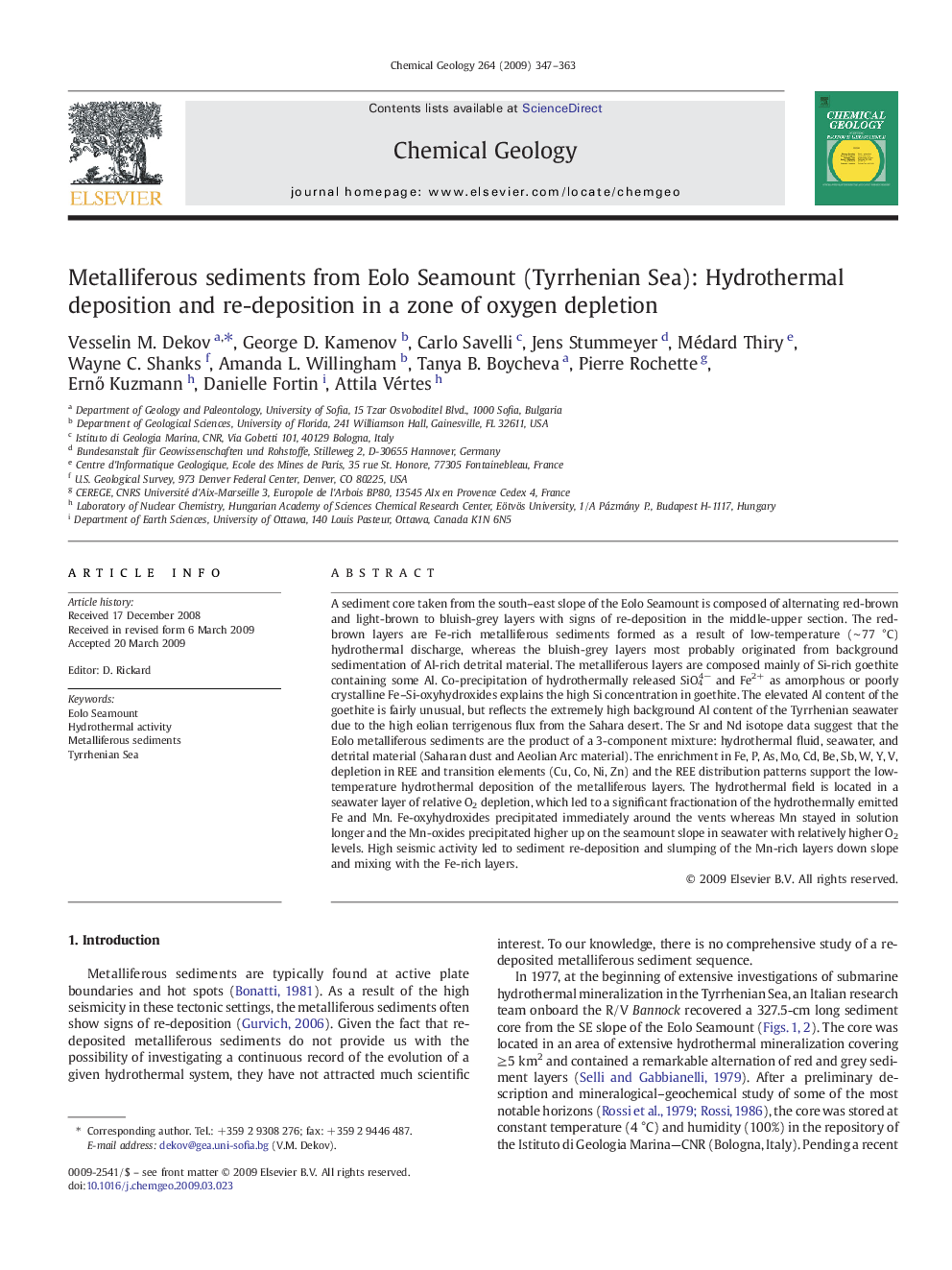| کد مقاله | کد نشریه | سال انتشار | مقاله انگلیسی | نسخه تمام متن |
|---|---|---|---|---|
| 4700321 | 1637705 | 2009 | 17 صفحه PDF | دانلود رایگان |

A sediment core taken from the south–east slope of the Eolo Seamount is composed of alternating red-brown and light-brown to bluish-grey layers with signs of re-deposition in the middle-upper section. The red-brown layers are Fe-rich metalliferous sediments formed as a result of low-temperature (∼ 77 °C) hydrothermal discharge, whereas the bluish-grey layers most probably originated from background sedimentation of Al-rich detrital material. The metalliferous layers are composed mainly of Si-rich goethite containing some Al. Co-precipitation of hydrothermally released SiO44− and Fe2+ as amorphous or poorly crystalline Fe–Si-oxyhydroxides explains the high Si concentration in goethite. The elevated Al content of the goethite is fairly unusual, but reflects the extremely high background Al content of the Tyrrhenian seawater due to the high eolian terrigenous flux from the Sahara desert. The Sr and Nd isotope data suggest that the Eolo metalliferous sediments are the product of a 3-component mixture: hydrothermal fluid, seawater, and detrital material (Saharan dust and Aeolian Arc material). The enrichment in Fe, P, As, Mo, Cd, Be, Sb, W, Y, V, depletion in REE and transition elements (Cu, Co, Ni, Zn) and the REE distribution patterns support the low-temperature hydrothermal deposition of the metalliferous layers. The hydrothermal field is located in a seawater layer of relative O2 depletion, which led to a significant fractionation of the hydrothermally emitted Fe and Mn. Fe-oxyhydroxides precipitated immediately around the vents whereas Mn stayed in solution longer and the Mn-oxides precipitated higher up on the seamount slope in seawater with relatively higher O2 levels. High seismic activity led to sediment re-deposition and slumping of the Mn-rich layers down slope and mixing with the Fe-rich layers.
Journal: Chemical Geology - Volume 264, Issues 1–4, 30 June 2009, Pages 347–363